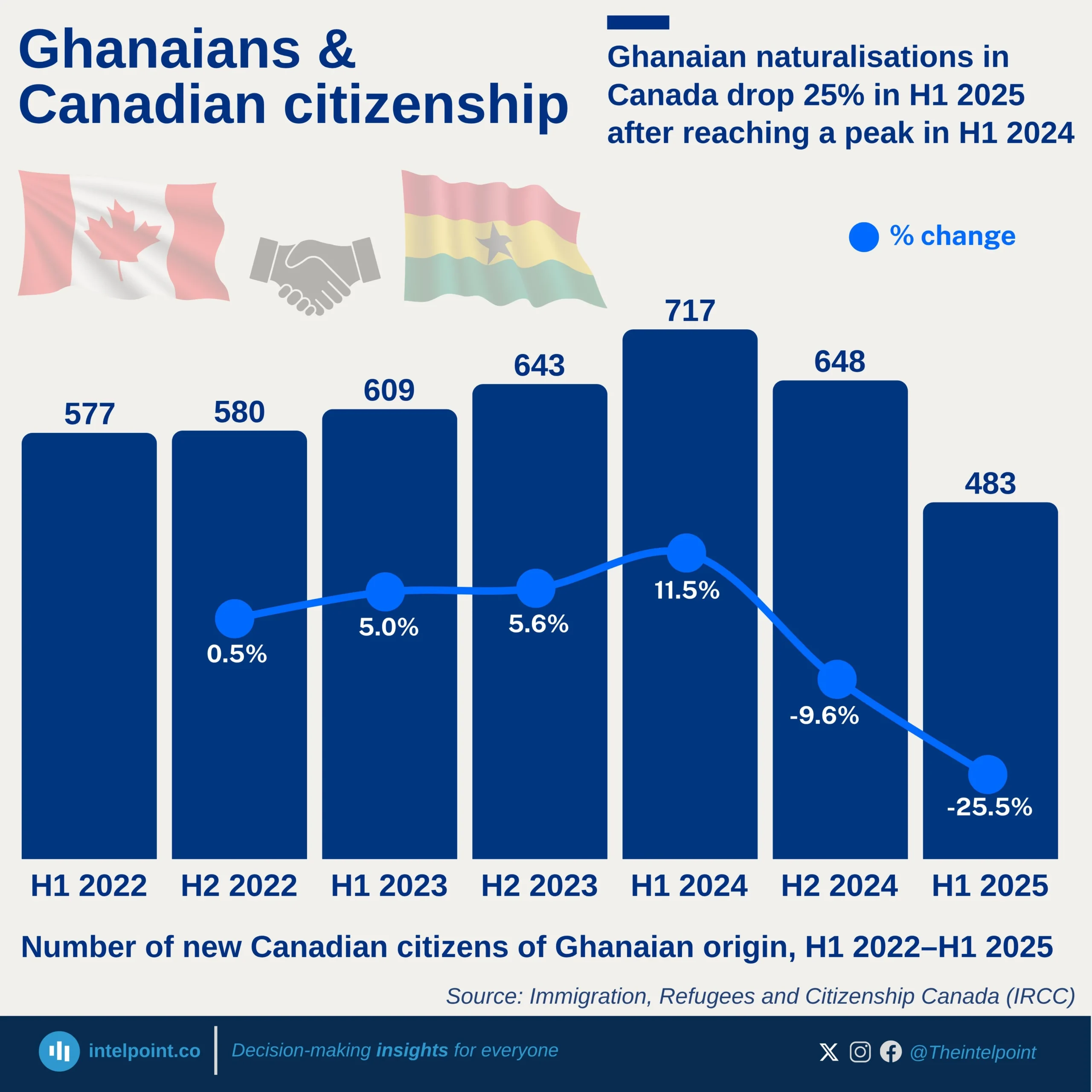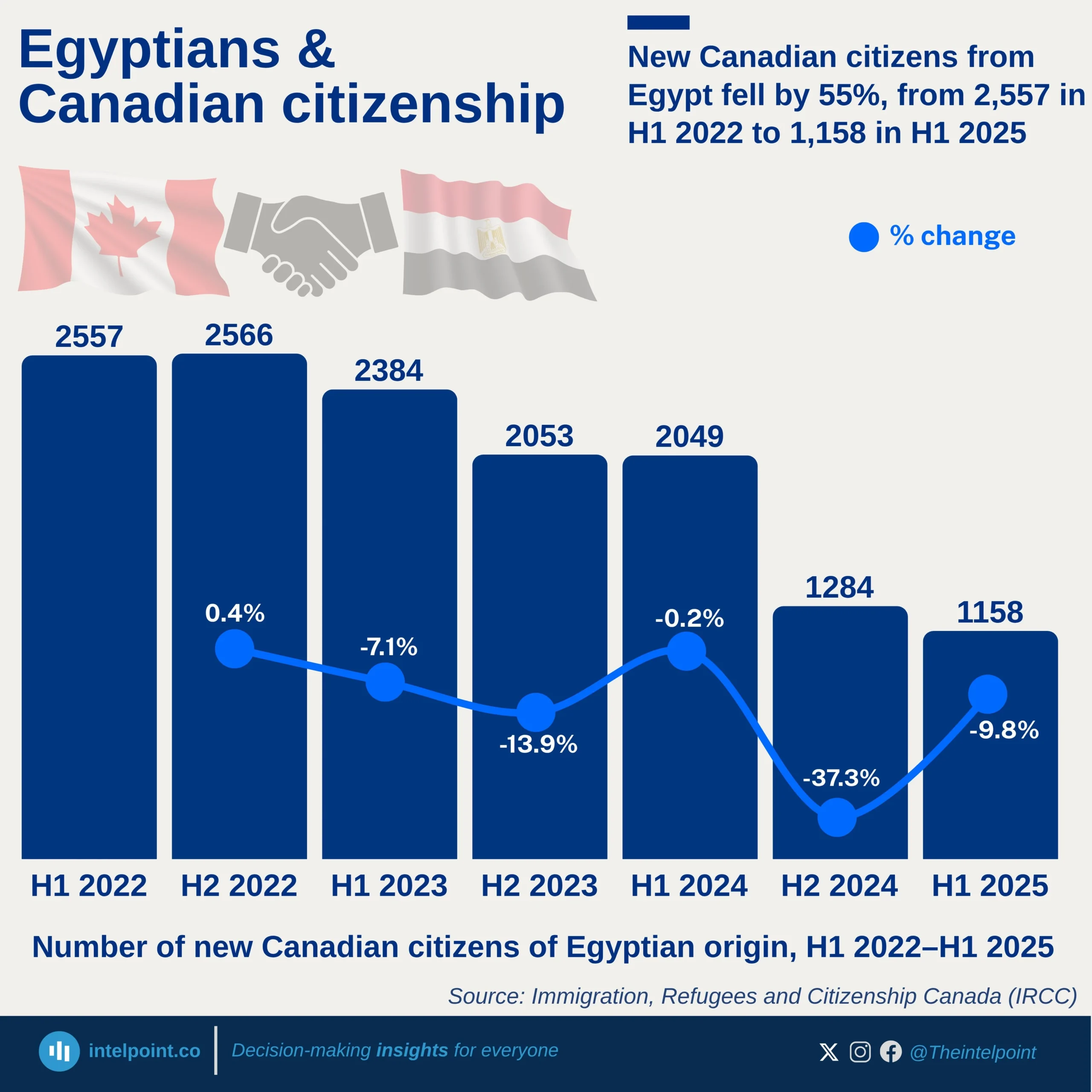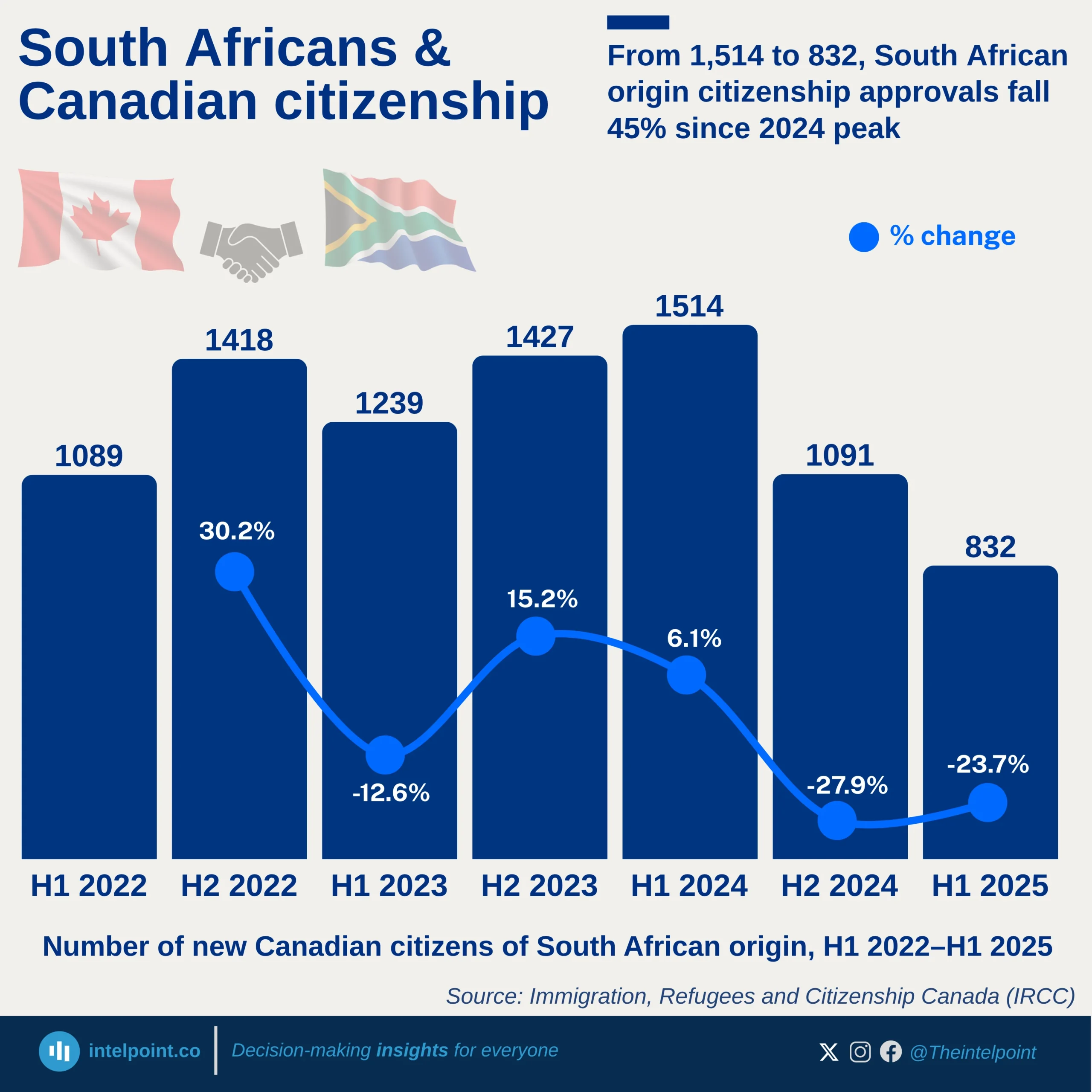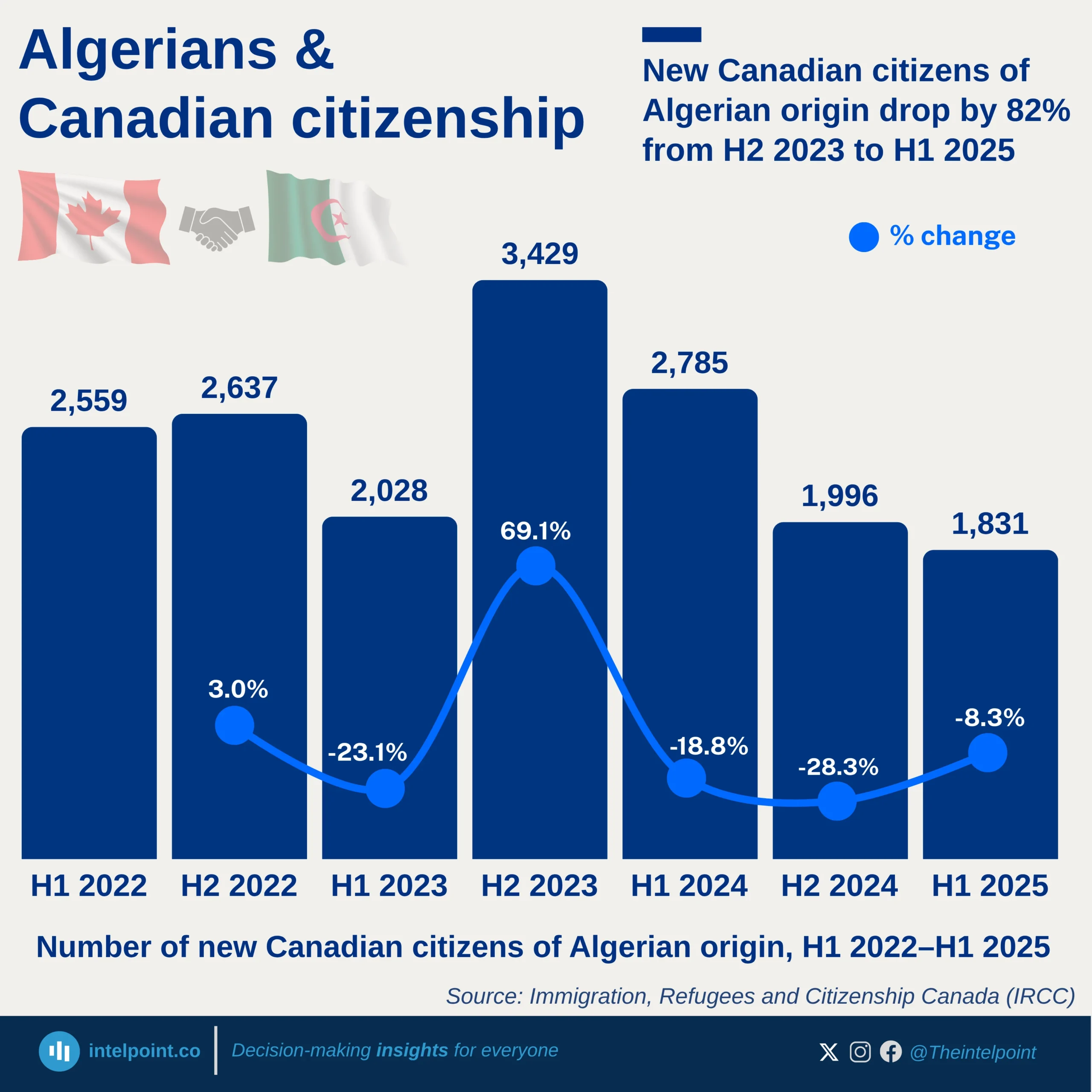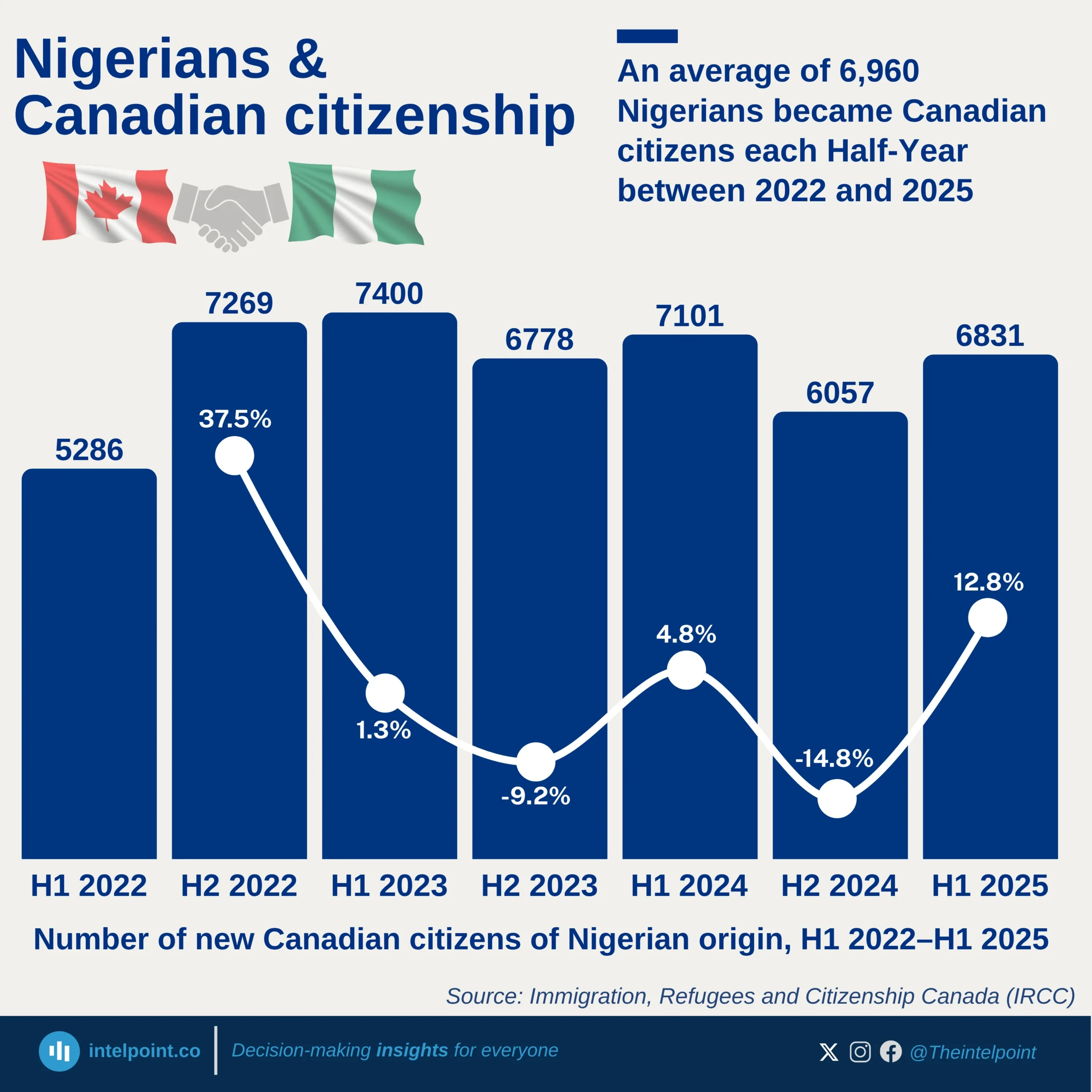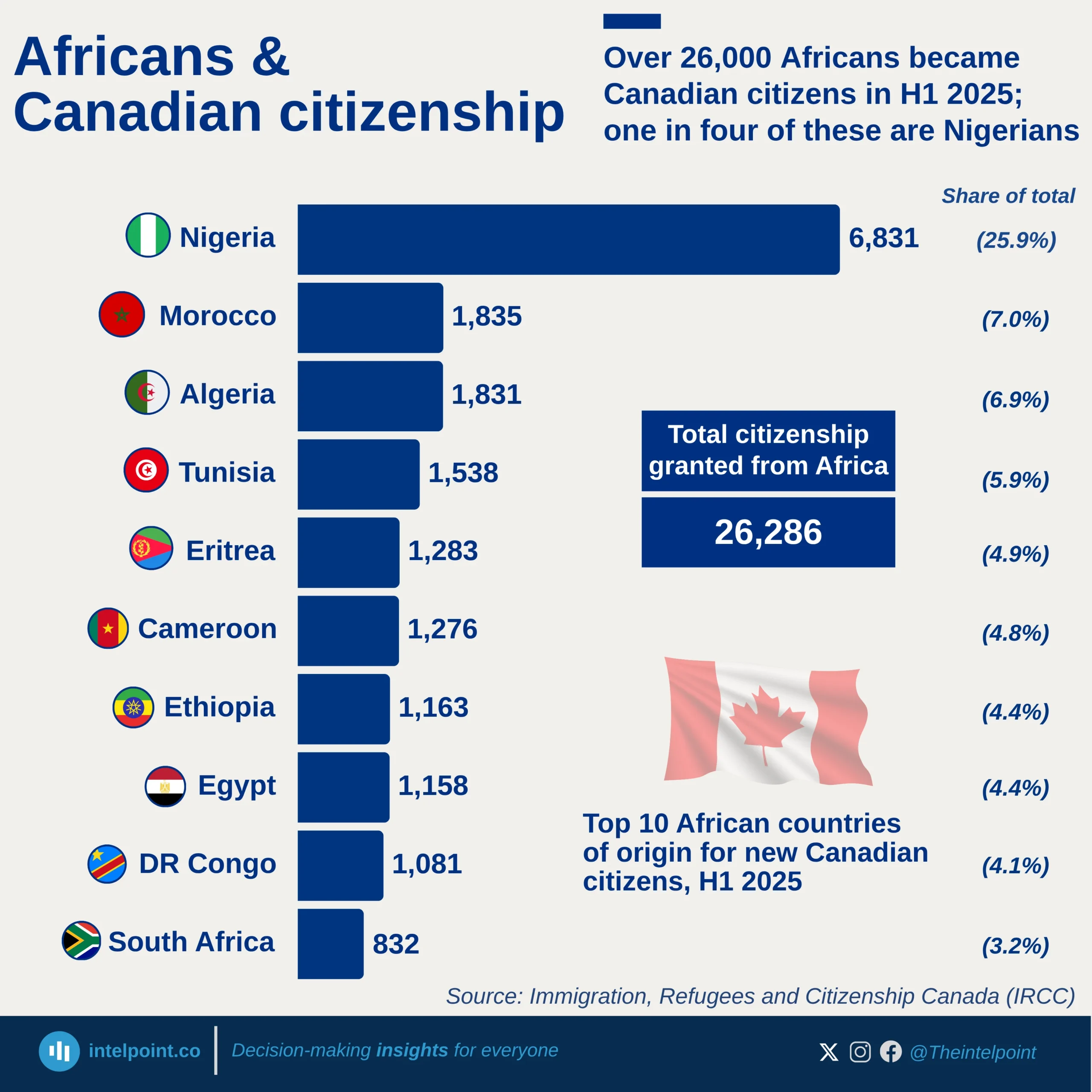The latest citizenship data for Canada reveals a global migration landscape increasingly shaped by Asia and Africa. In total, India led the list with 35,586 new citizens, representing nearly a quarter of all naturalisations. The Philippines (9.4%) and Nigeria (4.5%) followed, underscoring strong outflows from emerging economies seeking education, work, and stability abroad. While Asian countries dominate the rankings, Nigeria’s position signals Africa’s growing role in global migration networks. The smaller shares from advanced economies like the U.K. and U.S.A., both under 3%, reflect a trend where migration is increasingly South-to-North and opportunity-driven.
